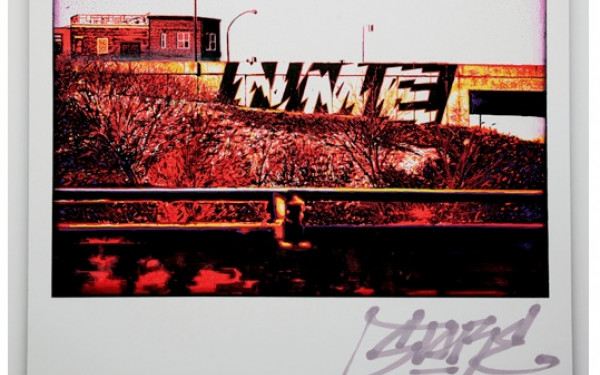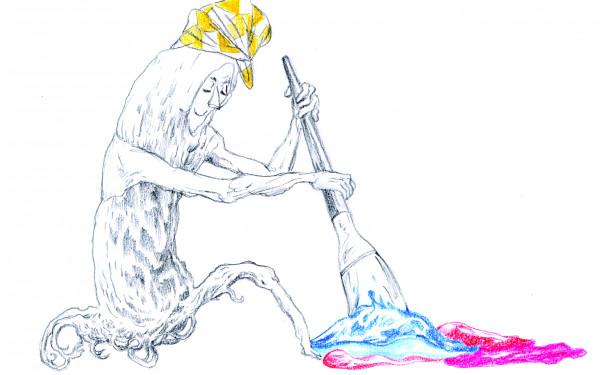A Roar to Shake the World’s Foundations
Art Exhibition Unground Explores the Excesses of Capitalist Consumerism
Prepare to be immersed in a land which you had thought to be inconceivable: a world without capitalism. This exhibition will whisk you away from the conservative grounding most of us are long-familiar with.
From Feb. 27 to Mar. 15, Montrealers can take in Unground, a multi-dimensional, multi-channel video installation containing references to what the press release describes as “mineral understructures of the modern metropolis, financial meltdowns, thawing glaciers, archaic caves and volcanic, arctic wastelands at the border of the inhabitable world.”
The exhibition presented at Darling Foundry, a contemporary visual arts centre in the Old Port, will display the work of Gast Bouschet and Nadine Hilbert, Luxembourg artists who have collaborated for more than 30 years.
By juxtaposing images of modern cities and the Arctic tundra, the show suggests an alternative to capitalist realism—a term describing the ubiquitous influence of capitalism on virtually all aspects of life.
“Offering an alternative to capitalist realism is certainly a challenge isn’t it?” mused Bouschet.
“Despite all rational and pragmatic arguments in favour of capitalism as the lesser evil,” he continued, “The fact that it is easier for us nowadays to imagine the end of the world than the end of capitalism shows how effective its spell is.”
The content featured in the latter stages of the video installation, when the exhibition showed in Luxembourg in 2012, includes volcanic ash smeared over images of the backdrop of the modern landmarks in London’s financial centre, such as The Gherkin.
These shots are juxtaposed with footage shot in Iceland, slowed down so as to give the audience a glimpse of eternity. Expect something similar in Montreal this year to what was on display in Luxembourg.
The Darling Foundry is a former metal works factory that is now a post-industrial re-appropriated space. The parallels between the exhibition space and the exhibition’s content itself are inescapable.
“We didn’t add anything; we just tried to take out all the things that were not usable anymore, like the heating system and poles all over the space,” said Caroline Andrieux, founder and artistic director at the Darling Foundry, in a 2013 interview with The Link.
“It was more a work of purification. We’re happy because we saved the building as it was.”
Capitalism is a ruthless economic system; it forgets and it never forgives. It sheds the disposable and retains only what it considers invaluable.
This exhibition challenges its audience to consider alternatives to the economic system political scientist Francis Fukuyama famously argued would mark “the end of history”—the neoliberal structure we live in today.
The artists invite their audience to “feel, think and meditate the forces which have cut off human beings from the rest of nature,” as explained on the Darling Foundry’s website.
Seeking to empower themselves and the audience by opening up the world to underground currents through the installation, the artists seek to create a zone where physical and mental experiences become accessible to the public.
As the ozone layer exposes further holes, like when you wear one of your grandmother’s sweatshirts for too long, our globe becomes further enveloped by the worldwide division of labour which the invisible hand of capitalism tends to demand.
The exhibition’s intention is to transform “these feelings of alienation and cultural estrangement into sorcerous gestures of insurrection.”
Bouschet explained that he and Hilbert aim to promote the “liberation and redistribution of power” in creating a space where one ponders “the right to develop one’s own world view and create one’s own values.”
The exhibition features multiple installations on different platforms, which are as important as the tangible matter in the space. There’s an ironic parallel between the comprehensive submergence of the installation and the comprehensive experience of capitalism.
“The sound of the installation, developed by Stephen O’Malley, is as important as the visual noise that we are feeding into it,” Bouschet said.
Stephen O’Malley is one of two founding members of drone metal pioneers Sunn O))). The long-duration tones of drone and doom metal facilitate a meditative experience where one can become enveloped in sound in mere seconds.
Along with writers Bataille, Nietzsche and Artaud, the artists are profoundly influenced by black metal theory and have previously collaborated with Amelia Ishmael, editor of black metal theory journal Helvete.
The artists are “excited to see what our work can do inside that huge industrial building,” according to Bouschet. “We have only seen images, and we can’t wait to experience the physicality of the space.”
Bouschet describes the exhibition, which opens next week, as where “today’s incredibly hectic world gets to meet something where time is stretched out and where various time zones [deep or geological time] run in parallel to each other.”
Unground // Feb. 26 to March 15 // Darling Foundry (745 Ottawa St.) // Free admission

2_742_1050_90.jpg)
_600_832_s.png)




_600_375_90_s_c1.jpg)